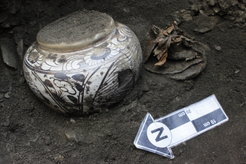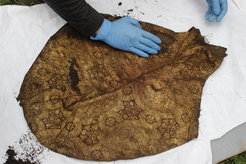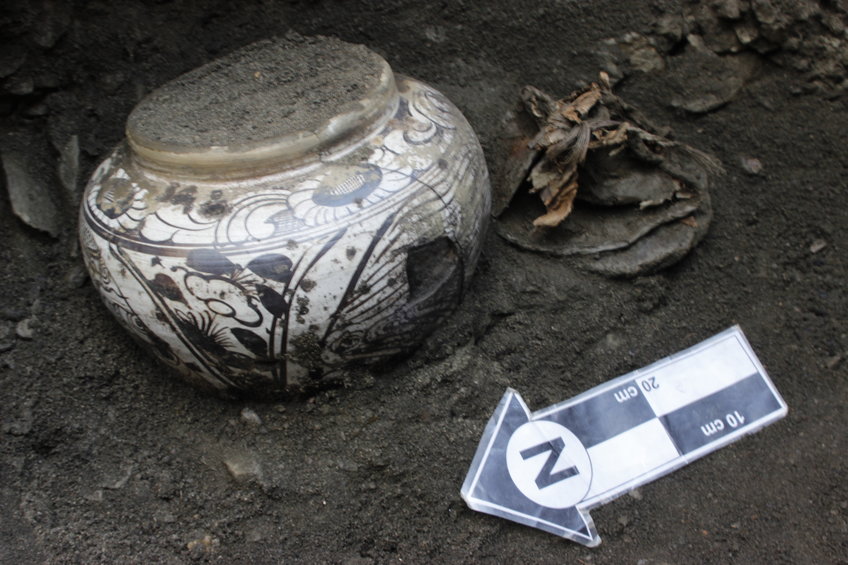800 year old dairy and silks recovered from Mongolian permafrost

The amazing discovery of vessels filled with perfectly preserved butter and dairy products date to ~800 years ago, during the Mongol period. Alongside ancient dairy, scientists recovered leather shoes, silk clothing and wall hangings. Fragments of several deel, the traditional Mongolian folded tunic, were identified in silk and leather. As burials were located in the permafrost, the dairy products, leather, and textiles were incredibly well preserved.
A previously looted Mongol period cemetery (~1200 CE) is being salvaged by an international team of archaeologists and conservators. The team of archaeologists, led by Dr. J. Bayarsaikhan of the National Museum of Mongolia and Dr. Julia Clark of NOMAD Science, the American Center for Mongolian Studies, and Flinders University, report that this discovery came about while they were salvaging materials from the 70 looted graves identified in northern Mongolia’s Darkhad Depression (Khovsgol Province). Dr. Bayarsaikhan and Dr. Clark got a tip from a local herder about the looted graves three years ago, and have since been working to save and study whatever they can from the Khorig Mountain site. Importantly, this locale was mentioned in the secret history of the Mongols as a sacred, and royal, burial place.

The international team includes specialists in many fields, including conservationist Sandra Vanderwarf from the American Museum of Natural History, proteomics and isotopes expert Dr. Alicia Ventresca Miller from the Max Planck Institute for the Science of Human History and the University of Michigan, computational modeling and archaeo-ecology expert Dr. Stefani Crabtree from the Santa Fe Institute and Utah State University, geophysics/remote sensing specialist Dr. Ian Moffat from Flinders University in Adelaide, South Australia, and hundreds of volunteers and students who have given their time and resources to make this project happen.
Dr. Bayarsaikhan and Dr. Clark have been working to combat looting in the region through educational programs, salvaging of sites, and working with local herders. While looting has historically been a problem in Mongolia, the systematic and complete looting of sites is a new phenomenon emerging in the last few years. Nearly every burial that could be identified on the surface had already been looted at the site. During their press conference on August 16, the team pleaded with the public and officials to take the matter seriously, as the exposure of these amazing finds leaves both the graves and the archaeology team open to security threats from the organized criminal network that is likely behind the looting. The team came forward with these findings at this time, however, hoping that increased attention would prompt some action to prevent further looting of these priceless archaeological sites.
Over the last few years the team has salvaged materials from around 70 burials, but there is more work to be done as additional looted cemeteries have been discovered. Once looted, the frozen remains begin to melt and the objects missed by the looters, or left behind as they have little market value, begin to degrade. The team has found silks, leather, and human bones strewn across the surface of the site. Sandra Vanerwarf, who specializes in the conservation of archaeological textiles, has been hard at work trying to save the fragile but beautiful silks. The team was recently awarded the Ambassadors Fund for Cultural Preservation by the US Embassy in Mongolia in order to continue the conservation efforts on these incredible textiles. Dr. Alicia Ventresca Miller and her colleagues at the Max Planck Institute for the Science of Human History are currently analyzing the dairy products, residues, and other materials recovered by the team.

